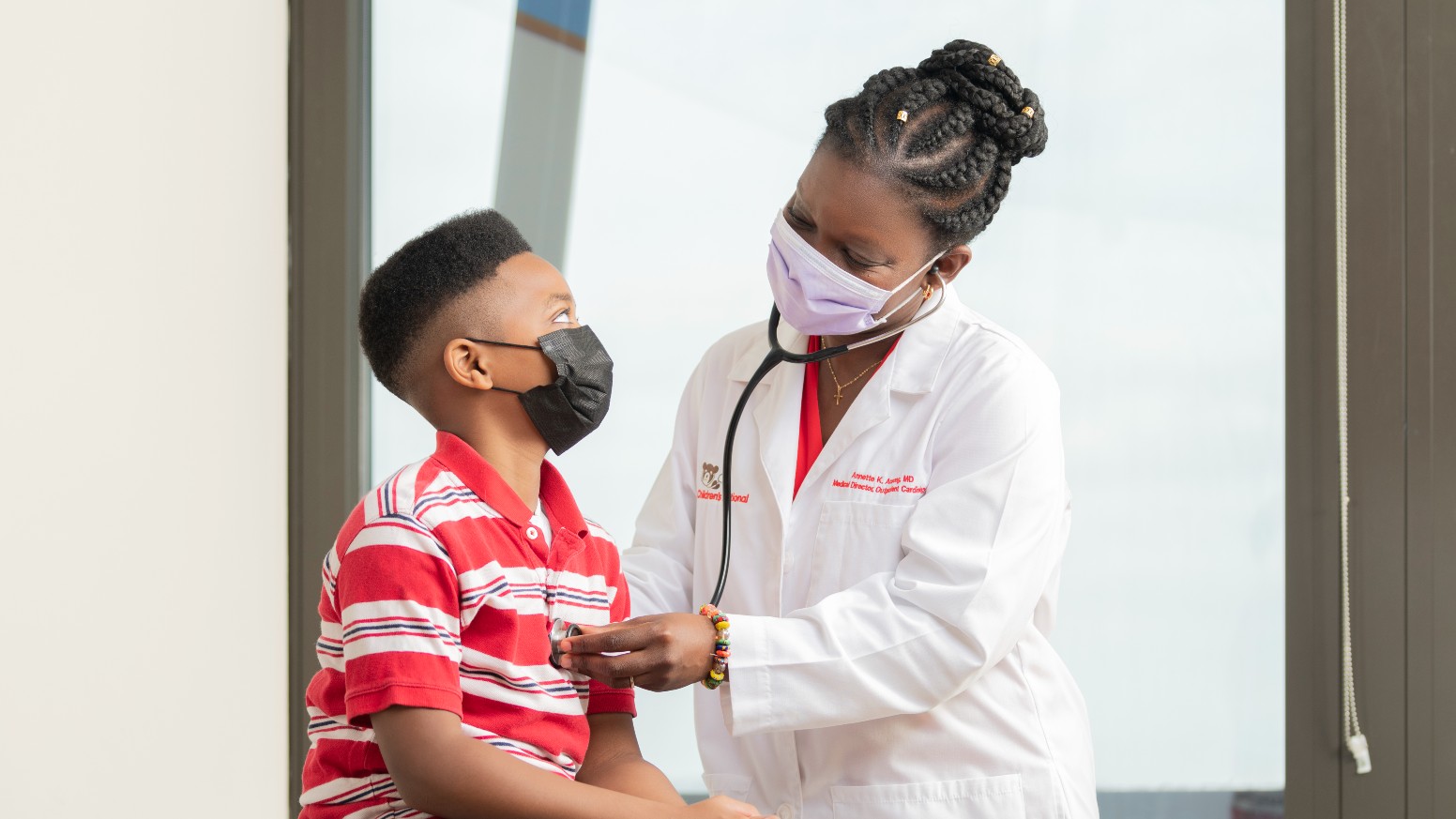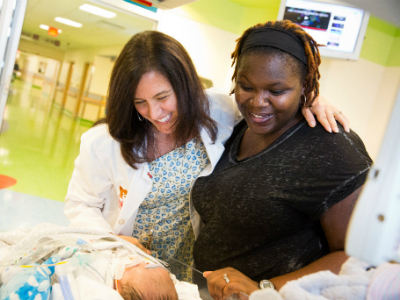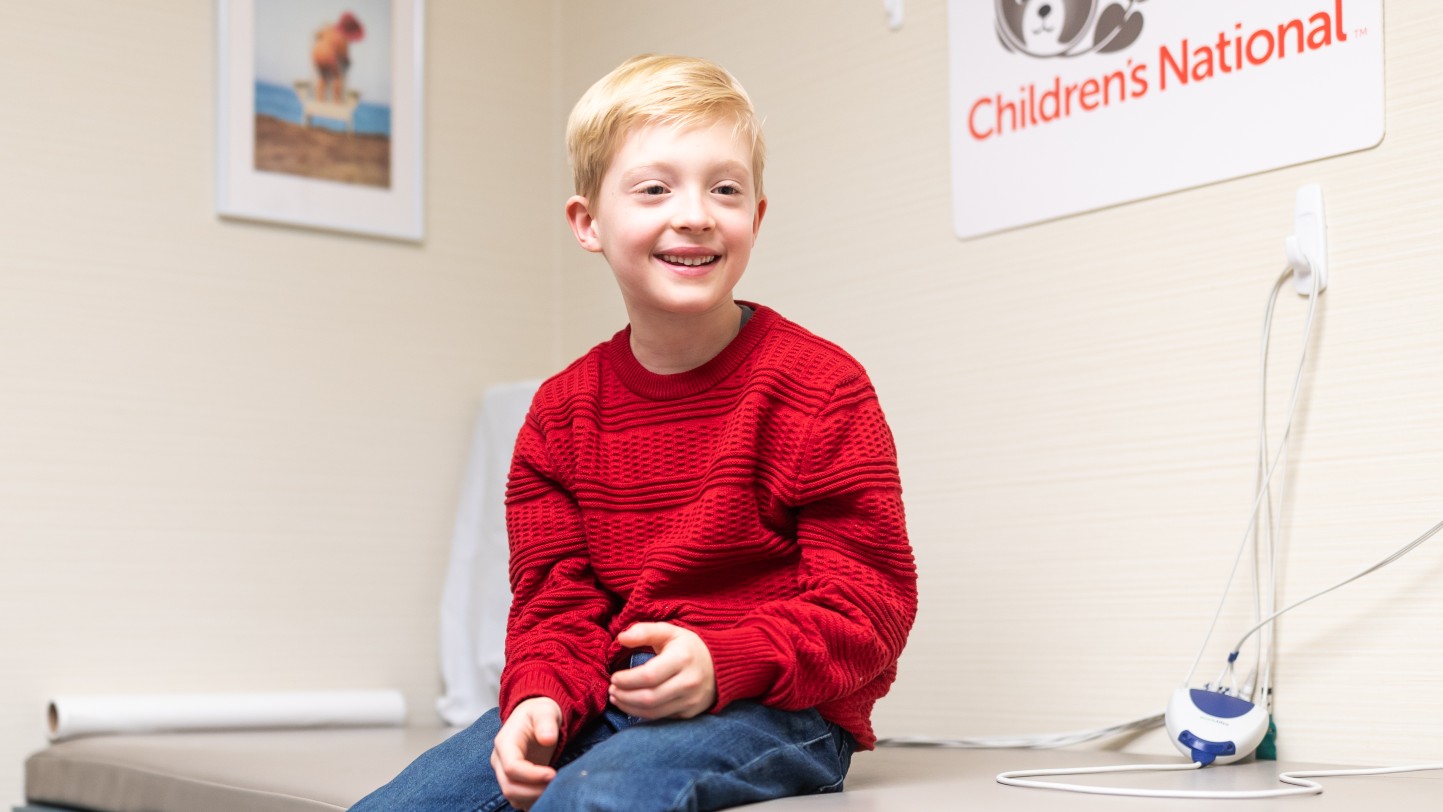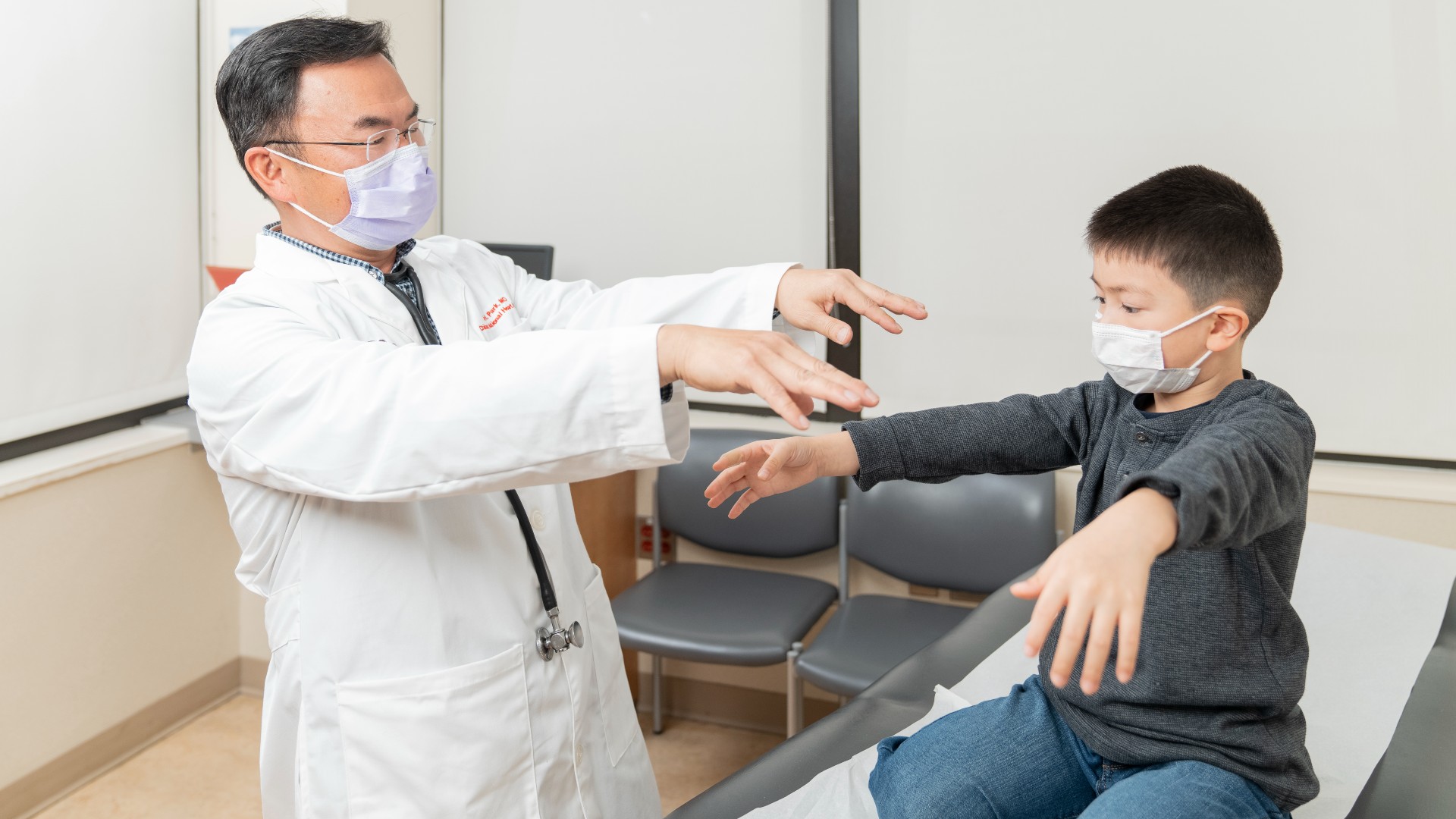Treatment
Pediatric Ventricular Septal Defect (VSD) Closure Devices
Muscular ventricular septal defect (VSD) is a congenital heart conditions that can affect blood flow in your child's heart. It's a common type of heart defect, but if untreated, it can cause your child's heart and lungs to work harder. At Children's National Heart Institute, we use advanced catheterization procedures to close these holes.
VSD Closure at Children’s National Hospital
Muscular VSD is an opening in the wall (septum) dividing the two lower chambers of the heart (ventricles). Normally, this wall closes before birth. When it doesn't, oxygen-rich blood in the left chamber can mix with oxygen-poor blood in the right one. If the hold is large, your child may experience:
- Fast breathing
- Difficulty feeding and slow growth as infants
- High pressure in blood vessels, that can lead to damage
Muscular VSD is the most common type of VSD. It is an opening in the muscular part of the ventricular septum.
Surgery is not often necessary for small holes. Open-heart surgery is a common treatment for larger holes, but at Children's National, we have another option. Our expert cardiac catheterization team uses minimally invasive, catheter-based procedures to repair larger holes. This leads to a shorter recovery, less pain and a quicker return to normal activities. In addition, there is no chest scar.
AMPLATZER® Duct Occluder Device for VSD: What to Expect
The AMPLATZER device is the most advanced device of its type available in the United States. Our team has extensive experience using the AMPLATZER Duct Occluder to repair VSD in babies and children. You can feel confident that every member of your child’s catheterization team has years of training in performing these procedures.
On the day of the procedure, our expert pediatric cardiac anesthesiologist will place your child under sedation. He or she will be asleep during the procedure and not feel any pain. The anesthesiologist continues to monitor your child the entire time. Learn more about anesthesia at Children's National.
During the procedure, we will:
- Insert a catheter (a long, thin tube) into a blood vessel near your child's groin.
- Measure pressure and oxygen in heart and size of opening.
- Place the occluder onto a special catheter and advance it to the VSD opening in your child's heart.
- Push the device out of catheter and implant it over the opening. The device fills the opening and seals it closed.
- Remove the catheter and close the incision.
- Transfer your child to our comfortable, child-friendly Cardiac Procedure Recovery Unit (CPRU), where our experienced pediatric nursing team will provide expert recovery care.
- Discuss discharge, recovery and follow-up instructions with you.
Contact Us
For more information, call us at 1-202-476-2020.

Cardiac Catheterization at Children's National Hospital
The pediatric heart experts at Children's National Hospital treat children with the most complex heart, blood vessel and valve conditions. Our Cardiac Catheterization program has one of the highest success rates for cardiac catheterization procedures. Learn more about Cardiac Catheterization.

Providers of VSD Closure Devices
 Aasha's Rare Gift Will Help Other Babies Grow up Healthy
Aasha's Rare Gift Will Help Other Babies Grow up HealthyTesting the descrption field
Departments that Offer VSD Closure Devices

Pediatric Cardiac Surgery
Our pediatric heart surgery team performs twice the number of surgeries of any other hospital in the region, with some of the best outcomes in the nation.









